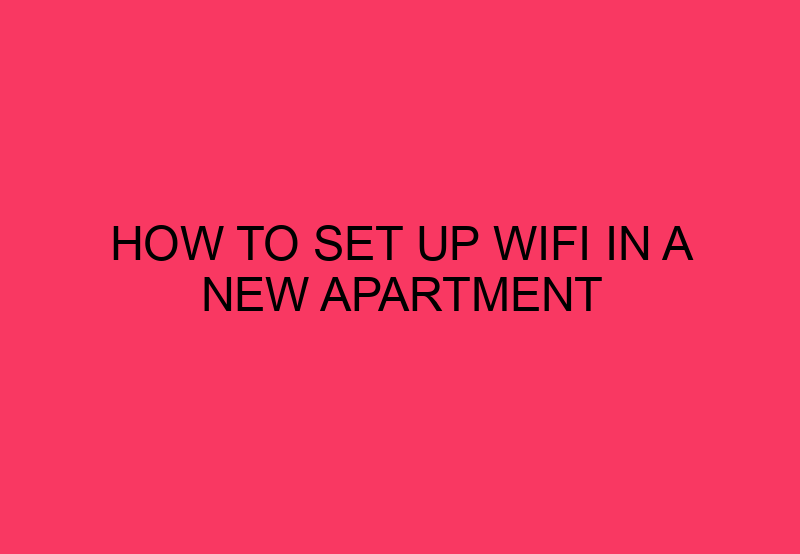Choosing the Right Router
When it comes to setting up WiFi in a new apartment, the first thing you need to consider is the type of router you’ll use. Not all routers are created equal, and it’s important to choose one that will suit your needs and budget.
Some things to consider include the size of your apartment, the number of devices you’ll be using, and your internet speed. If you have a large apartment or lots of devices, a more powerful router with a wider range might be the best option. On the other hand, if you only have a small apartment and fewer devices, a less expensive router may suffice.
Locating the Router
Once you’ve chosen your router, the next step is to find the best location for it in your apartment. Ideally, the router should be located in a central place where it can provide equal coverage to all areas of your apartment. Placing the router close to a window can also help improve signal quality, as can keeping it away from other electronic devices and large objects that may obstruct the signal.
Connecting the Router
Once you’ve found the best location for your router, the next step is to connect it to your modem and power it on. If you’re unsure how to do this, refer to the instructions provided with your router.
After your router is set up, you’ll need to connect your devices to the WiFi network. To do this, simply search for available networks on your device and select your network. You’ll then be prompted to enter your network password, which can usually be found on the bottom of your router.
Securing Your Network
One of the most important things to consider when setting up WiFi in a new apartment is securing your network. There are several steps you can take to ensure that your network is secure and prevent unauthorized access.
Firstly, make sure that you’ve enabled WPA2 encryption on your router. This ensures that all data transmitted between your devices and your router is encrypted and secure.
It’s also a good idea to change your network name and password from the default settings provided by your router. Choose a strong password that consists of both upper and lowercase letters, numbers, and symbols, and avoid using common words or phrases.
Finally, you may want to consider disabling WPS (WiFi Protected Setup) on your router. This feature is designed to make it easy to connect devices to your network, but it can also make it easier for hackers to gain access to your network.
Troubleshooting
If you’re experiencing issues with your WiFi network, there are several things you can do to troubleshoot the problem. Firstly, try restarting your router and modem, as this can often resolve connectivity issues.
You can also try moving your router to a different location, or using a WiFi range extender to extend the coverage of your network.
Finally, if you’re still experiencing issues, you may need to contact your internet service provider or the manufacturer of your router for further assistance.
In conclusion, setting up WiFi in a new apartment doesn’t have to be a daunting task. By choosing the right router, locating it in the best place, connecting it to your modem, securing your network, and troubleshooting any issues that arise, you can enjoy a fast and reliable WiFi connection in no time.
